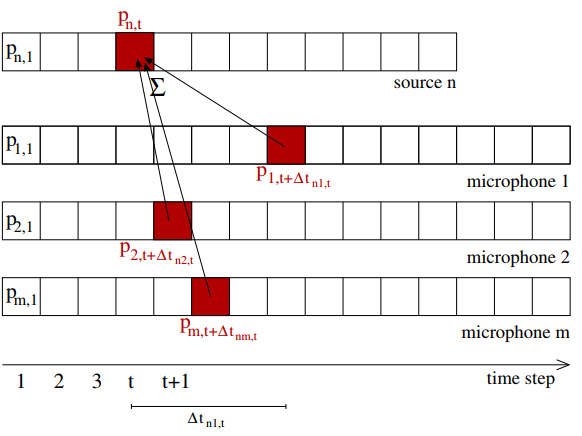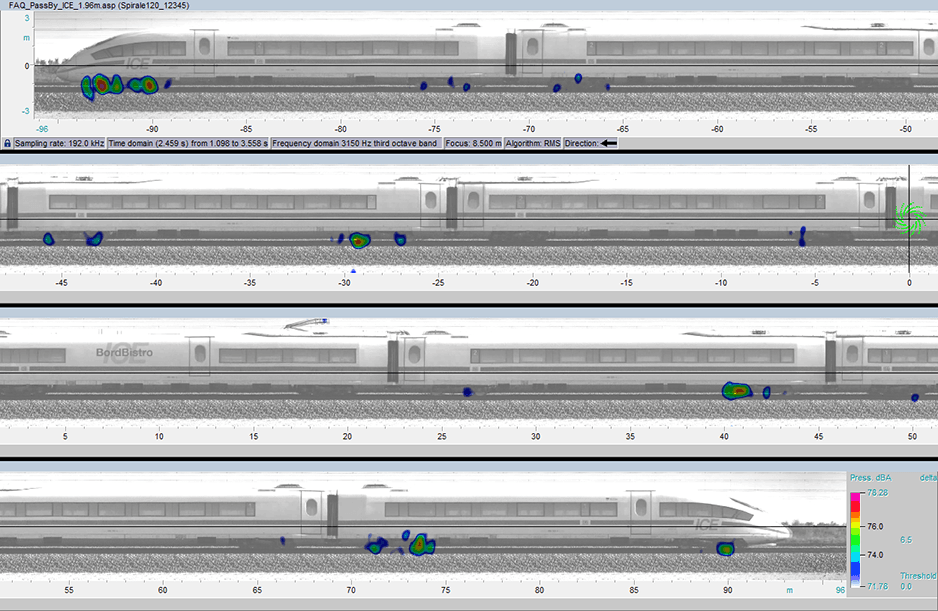If moving objects are to be measured, common beamforming methods will produce only diffuse acoustic maps since sound sources are located at different locations of the acoustic map in each instant of time. In addition, the Doppler effect which is caused by the movement of the measured object changes the spectrum and temporal progression of the amplitude of the emitted signal at the receiver.
The PassBy 2D module is based on TDBF and considers the movement of the measured object. Thereby, the influence of the Doppler effect is eliminated. In order to perform this correction, the velocity \(v\) and the trajectory of the measured object need to be determined. If these two parameters are provided, the focus plane can be carried virtually with the measured object at the velocity \/v\) on the trajectory.
Therefore, the runtime \(\Delta t_{nm,i}\) has to be recalculated in each time instant \(t_i\) for each possible source point \(n=1,...,N\) and microphone \(m\). Afterwards, the sound pressure \(p_{m,t_i+\Delta t_{nm,i}}\) can be summed up over all \(m=1,...,M\) microphones in order to determine the sound pressure \(p_{n,t_i}\) at each point of the acoustic map. This corresponds to the TDBF procedure with additional time-dependent \(\Delta t_{nm,i}\) as shown in Fig. 1. The displayed summation of samples corrects the frequency shift caused by the Doppler effect. A description of the amplitude correction can be found in the literature mentioned below.
Fig. 2 shows the application of the PassBy 2D module on a high speed train which moves with an average velocity of \(v=78.6 m/s\). An integration time of 25 ms was chosen for the calculation, and the acoustic map was plotted with dynamic of 6.5 dBA. The image shows the third octave band at 3.15 kHz.


